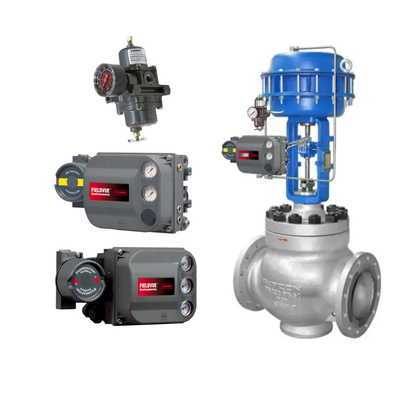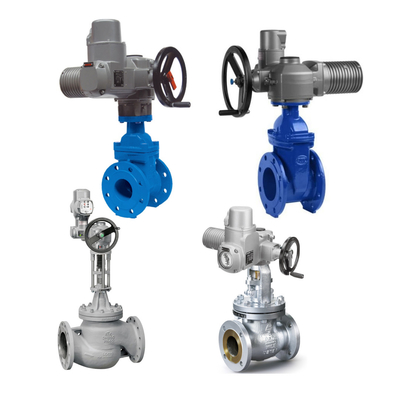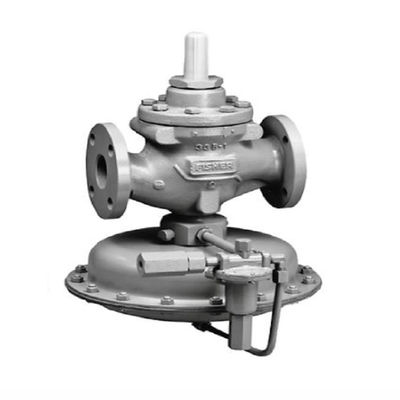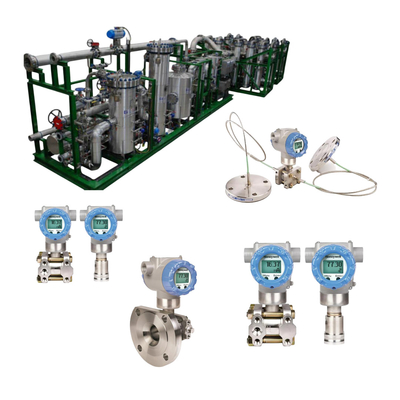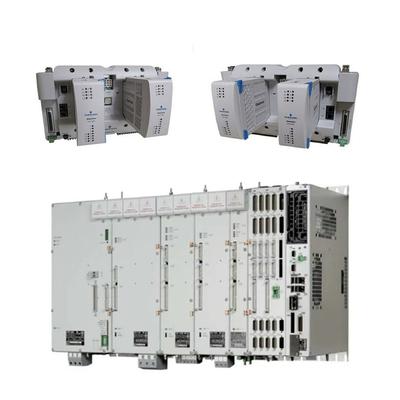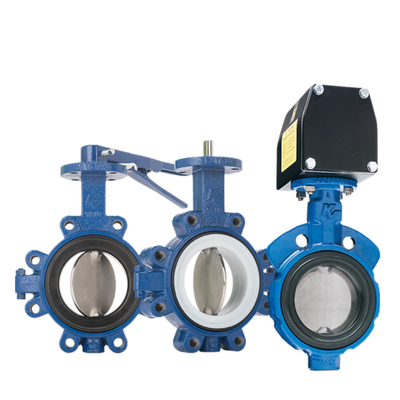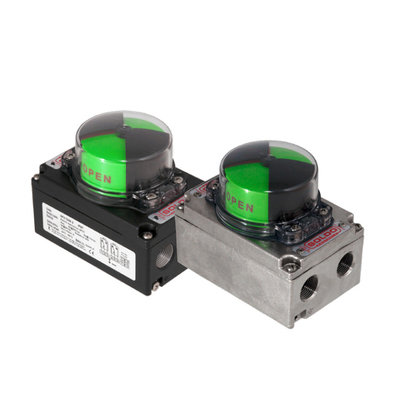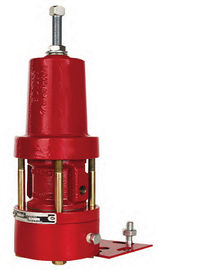
A pneumatic control valve and electric control valve installation principles
Pneumatic control valve installation principles:
- pneumatic control valve installation position, from the ground requires a certain height, the valve should leave a certain space above and below, in order to carry out valve disassembly and repair. For equipped with pneumatic valve positioner and handwheel control valve, must ensure that the operation, observation and adjustment is convenient.
- The control valve should be installed in the horizontal pipeline, and up and down with the pipeline vertical, generally to be supported under the valve. For special occasions, the need for horizontal installation of the control valve in the vertical pipeline, the control valve should also be supported (except for small diameter control valve). Installation, to avoid additional stress to the valve.
- The working environment temperature of the control valve should be (-30 - +60) relative humidity is not greater than 95%.
- Control valve before and after the position should be straight pipe section, the length of not less than 10 times the diameter of the pipeline (10D), in order to avoid the valve is too short to affect the flow characteristics of the straight pipeline.
- The caliber of the control valve and process piping is not the same, should be connected using a reducer. In the installation of small diameter control valve, can be threaded connection. Fluid direction arrow on the valve body should be consistent with the fluid direction.
- To set up bypass piping. The purpose is to facilitate switching or manual operation, can be adjusted without stopping the valve for maintenance
- Control valves should be thoroughly removed from the pipeline before installation of foreign objects, such as dirt, welding slag, etc..

Electric control valve installation principles:
- the installation position, height, import and export direction of the valve must comply with the direction of the design requirements, the connection should be firm and tight.
- Valves can be used in various forms of end connections with the pipeline. One of the most important connections are threaded, flanged and welded connections. Flange connection, if the temperature exceeds 350 ℃, due to the bolt. Flange and gasket creep relaxation, should choose high temperature resistant bolt material.
- Valve installation must be carried out before the appearance of the inspection, the valve nameplate should be in line with the current international standard GB12220 “General Valve Marking" provisions. For the working pressure greater than 1.0MPA and in the main pipeline to play a role in cutting off the valve, should be carried out strength and tightness test, qualified before use. Other valves can not be tested separately, to be tested in the system pressure test.
- strength test, the experimental pressure for the nominal pressure of 1.5 times the duration of not less than 5min, the valve shell, packing should be no leakage.
- tightness test, the experimental pressure of 0.3mpa, the experimental pressure in the experimental duration of time should remain unchanged, the time should be in accordance with the provisions of Table 2, to the valve sealing surface without leakage is qualified.
- Nominal diameter: DN15-500
B pneumatic control valves and electric control valves common failures
C; pneumatic control valve common faults and causes
(a) control valve does not act, fault phenomena and causes are as follows;
- no signal, no gas source.
- gas source is not open,
- due to the gas source containing water in the winter icing, resulting in blocked ducts or filters, pressure-reducing valve clogging failure,
- compressor failure
- gas supply main leakage.
- air source, no signal.
- regulator failure
- positioner corrugated steel leakage
- regulation network diaphragm damage
- Positioner no air source,
- filter clogging,
- pressure reducing valve failure
- pipeline leakage or clogging
- Positioner has air source, no output. Throttle hole of positioner is clogged
- there is a signal, no action.
- valve spool off,
- spool and society or with the valve seat jammed
- stem bending or broken
- seat spool frozen or coke block dirt.
- actuator spring because of long-term unused and repair dead
(ii) unstable action of the regulating valve. Fault phenomena and causes are as follows:
- unstable gas pressure
- compressor capacity is too small
- pressure reducing valve failure
- Signal pressure instability
- control system time constant is not appropriate
- regulator output instability
- stable gas source pressure, signal pressure is also stable, but the action of the regulator valve is unstable.
- positioner amplifier ball valve by the spoils of wear and tear is not strict, gas consumption will be particularly large output shock.
- positioner amplifier nozzle baffle is not parallel, the baffle plate can not cover the nozzle, the
- output pipe, line leakage.
- actuator rigidity is too small.
- stem movement in the friction resistance is large, and the contact with the phase parts of the block phenomenon.
(ii) The actuator is too rigid.
(iii) Vibration of control valve. Fault phenomena and causes are as follows:
- the regulating valve vibrates at any opening degree.
- unstable support
- nearby vibration source
- spool and liner wear serious.
- Control valve vibration in the fully closed position
- control valve selected large, often used in small openings:
- single-seat valve medium flow direction and the opposite direction of closing
(D) the action of the control valve sluggish sluggish phenomenon and the reasons are as follows:
- Valve stem only in a single direction of action sluggish
- pneumatic thin-film actuator diaphragm damage leakage
- actuator in the “O" seal leakage
- Valve stem in reciprocating action are sluggish phenomenon
- Valve body is blocked with viscous matter
- PTFE filler deterioration hardening or graphite - asbestos packing lubricant drying.
- packing is added too tight, friction resistance increases.
- due to the stem is not straight leading to friction resistance.
- no positioner pneumatic control valve can also lead to lead to retardation
(E) control valve leakage increases, the reasons for leakage are as follows
- the valve is fully closed when the leakage is large,
- the spool is worn, the internal leakage is serious,
- valve is not adjusted to close not strict
- The valve can not reach the fully closed position
- medium pressure difference is too large, the rigidity of the actuator is small, the valve is not tight
- foreign objects in the valve
- bushing sintering
(F) adjustable range of flow becomes small. The main reason is that the spool is corroded smaller, so that the adjustable minimum flow becomes larger.

Understand the failure of the pneumatic control valve phenomenon and the reasons, you can take measures to solve the problem.
How to choose pneumatic and electric actuators
How to choose an actuator
1. The main considerations for the selection of actuators
- Reliability;
- economy;
- smooth action, sufficient output torque;
- simple structure, easy maintenance.

2. Comparison of electric actuator and pneumatic actuator selection
- (1) Pneumatic actuator is simple and reliable
- (2) Drive source
- (3) Price
- (4) thrust and stiffness: both comparable.
- (5) Fire and explosion-proof
3. Recommendations
- (1) Where possible, it is recommended to use imported electronic actuators with domestic valves for localization and new projects.
- (2) Although the membrane actuator has the defects of insufficient thrust, small rigidity and large size, its structure is simple, so it is still the most used actuator.
- (3) Piston actuator selection attention:
- (1) pneumatic thin-film actuator thrust is not enough, the choice of piston actuator to improve the output force; for large differential pressure control valve (such as medium pressure steam cut-off), when DN ≥ 200, or even to choose a double-layer piston actuator;
- (2) for ordinary control valves, you can also choose the piston actuator to replace the membrane actuator, so that the size of the actuator is greatly reduced, in this regard, the use of pneumatic piston control valve will be more;
- (3) Angle stroke class control valve, the angle stroke actuator, the typical structure is a double-piston rack and pinion rotation type. It is worth emphasizing that the traditional “straight stroke piston actuator + angle iron + crank linkage" mode.
Comparison of electric and pneumatic actuators
1. Overload resistance and service life
Electric actuators can only be used for intermittent operation and are therefore not suitable for continuous closed-loop operation. Pneumatic actuators are overload-resistant and maintenance-free throughout their service life. No oil changes or other lubrication is required. With a standard service life of up to one million switching cycles, pneumatic actuators are superior to other valve actuators.

2. Safety
Pneumatic actuators can be used in potentially explosive situations, especially when encountering the following situations:
- The need for explosion-proof valves (such as Namur valves with suitable coils);
- valves or valve islands need to be installed outside the explosive area, the use of pneumatic actuators in the explosive area to be driven through the gas pipe;
- electric actuators are not easy to use in potentially explosive situations and high cost.
3. Overload resistance
In the need to increase the torque or the force has special requirements, electric actuators will quickly reach the torque limit. Especially if the valve actuator is opened irregularly or closed for a long period of time, the advantages of the pneumatic actuator's resistance to overload are obvious, because deposits or sintering will increase the starting torque. With pneumatic components, the working pressure as well as the acting force or torque can be easily increased.
4. Economy
As most valve actuators in water and wastewater technology are operated in an on/off mode or even designed for manual operation, pneumatic components open up important prospects for rationalization. In contrast to pneumatic actuators, if electric actuators are used, monitoring functions such as over-temperature monitoring, torque monitoring, changeover frequency, and maintenance intervals have to be designed into the control and test system, which results in a large number of line inputs and outputs. Pneumatic actuators do not require any monitoring and control functions other than end position sensing and air source handling. The low cost of pneumatic actuators makes it all the more important to automate manual valve actuators.
5. Assembly
Pneumatic technology is very simple. The installation of pneumatic actuators on valve drive heads and the connection and actuation of air handling units can be realized easily. In addition, the maintenance-free design of pneumatic actuators ensures convenient and easy-to-use fit-and-run operation.
6. Components
Pneumatic components are highly vibration-resistant, robust, durable and generally undamaged. Even very high temperatures do not damage the corrosion-resistant components. Electric actuators consist of a large number of components and are relatively easy to damage.
7. Technology
Linear actuators act directly on the closing device, whereas oscillating actuators require only a piston and a drive shaft to convert the “linear compressed air force" into an oscillation. Slow movements can also be easily achieved with pneumatic actuators, e.g. through the use of simple and low-cost flow control elements. Electric actuators incur significant energy losses when converting the supplied energy into motion. This is firstly due to the fact that the electric motor converts most of the energy into heat and secondly due to the use of a gearbox.
Summary
1. Pneumatic Actuators
Nowadays, most of the industrial control occasions used in the actuator is a pneumatic actuator, because the gas source to do the power, compared to electric and hydraulic to be economical, and the structure is simple, easy to grasp and maintenance. From the maintenance point of view, the pneumatic actuator is easier to operate and calibrate than other types of actuators, and it can be easily realized in the field of positive and negative left and right interchangeable. Its biggest advantage is safety, when using a positioner, it is ideal for flammable and explosive environments, while electrical signals that are not explosion-proof or intrinsically safe are potentially at risk of fire due to ignition. Therefore, although the application of electric control valves is now more and more extensive, but in the chemical industry, pneumatic control valves still occupy the absolute advantage.
The main disadvantages of pneumatic actuators are: slower response, poor control accuracy, and poor resistance to deviation, due to the compressibility of the gas, especially with large pneumatic actuators, where it takes time for the air to fill the cylinder and empty. However, this should not be a problem, because many working conditions do not require a high degree of control accuracy and extremely fast response and resistance to deviation.
2. Electric actuators
Electric actuators are mainly used in power plants or nuclear power plants where a smooth, stable and slow process is required in high pressure water systems.
The main advantage of electric actuator is the high stability and constant thrust that can be applied by the user, the maximum actuator generated thrust can be as high as 225000kgf, the only one that can achieve such a large thrust is the hydraulic actuator, but the cost of the hydraulic actuator is much higher than the electric one. Electric actuator's anti-deviation ability is very good, the output thrust or torque is basically constant, can be very good to overcome the medium's unbalance force, to achieve accurate control of process parameters, so the control accuracy is higher than the pneumatic actuator. If equipped with servo amplifiers, can easily realize the positive and negative role of the interchange, but also can easily set the broken signal valve position state (keep / full open / full closed), and failure, must stay in the original position, which is the pneumatic actuator can not do, pneumatic actuator must be with the help of a set of combination of protection systems to realize the position.
The disadvantages of electric actuators are: more complex structure, more prone to failure, and because of its complexity, the technical requirements of the field maintenance personnel is relatively high; motor operation to generate heat, if the regulation is too frequent, easy to cause overheating of the motor, thermal protection, but also increase the wear and tear on the speed reduction gears; the other is slower, from the regulator outputs a signal to the regulator valve responds to the corresponding position, it takes a long time to move to the position. From the regulator output a signal, to the regulating valve response and movement to the corresponding position, it takes a long time, which is not as good as the pneumatic and hydraulic actuators.

 Your message must be between 20-3,000 characters!
Your message must be between 20-3,000 characters! Please check your E-mail!
Please check your E-mail!  Your message must be between 20-3,000 characters!
Your message must be between 20-3,000 characters! Please check your E-mail!
Please check your E-mail! 
